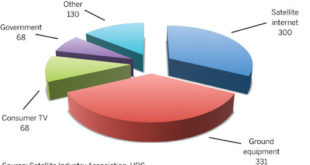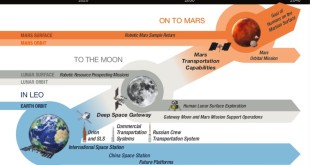What we are seeing is that the world has entered an era of intense competition in almost all spheres including geopolitical, economic, military, technology and industry. On one hand, competition is helpful as it speeds up innovation and development. On the other hand, when it becomes unmanageable and employs unfair …
Read More »Propulsion technologies for Space logistics, In-Space Assembly (OOS / ISA), automated satellite on-orbit servicing (OOS)
In the history of spaceflight, almost all spacecraft have been manufactured and assembled on the ground, then integrated into a launch vehicle for delivery into orbit. This approach imposes significant limitations on the size, volume, and design of payloads that can be accommodated within the fairing of a single launch …
Read More »Satellite Command and data handling (C&DH) & On-board computer (OBC) technologies
Spacecraft are man-made machines that operate in space. An orbiting spacecraft is normally referred to as a satellite, although it is manmade as opposed to a natural satellite like our moon. A spacecraft is typically subdivided into two major parts, the payload and the bus. The bus provides the structural body …
Read More »DARPA SPCE improving efficiency of radiation-tolerant Power convertors for Military LEO Satellites
The space industry is set to expand to over $8.8 billion dollars by 2030 fueled by the rapid increase in the number of small satellite launches and decreased costs resulting from rideshare companies and programs A satellite present in an orbit should be operated continuously during its life span. …
Read More »China’s Beidou Navigation Satellite System (BDS) provides global coverage with millimeter level accuracy
The Global Positioning System (GPS), originally Navstar GPS, is a satellite-based radio navigation system owned by the United States government and operated by the United States Space Force. It is one of the global navigation satellite systems (GNSS) that provides geolocation and time information to a GPS receiver anywhere on …
Read More »With Rising threat in Space domain from Electronic to Cyber Warfare, Space agencies enhancing Cyber security measures
Space is increasing becoming another domain of conflict due to enhanced militarisation i.e. utilisation of space systems by defence forces to support military operations as well as space weaponization with the proliferation of counter-space weapons. There are a variety of threats to space systems, from Direct ascent and co‐orbital anti-satellite …
Read More »DARPA MuS2 developing Muon Source to detect shielded nuclear contraband, to objects deeply buried up to thousands of meters below the earth’s surface
Muons are subatomic particles that behave a lot like electrons but are around 200 times heavier. As the US Department of Energy explains, “Muons created in the atmosphere constantly hit every inch of the Earth’s surface and pass through almost any substance.” Many scientists have noted that measuring the …
Read More »New Space or Space 2.0 global Race
The first space age is considered to be started in 1957. The 20th-century space race between the USA and the USSR was primarily a military technological competition. Each strove to be the first to launch satellites or land on the Moon, while the rest of the world looked on. In …
Read More »Space threats require Space Based Sensors (SBS) to enhance Space Situational Awareness (SSA)
There has been an exponential growth of space objects, including orbital debris that has increased the in-orbit collision risk. In the year 2019 alone, 385 smallsats were launched reaching a value close to 2900 in mid-2020 and still rapidly increasing. Moreover, taking into account all the applications filed by satellite …
Read More »Mars Robotic, human settlement and colonization Race
The idea of sending humans to Mars has been the subject of aerospace engineering and scientific studies since the late 1940s as part of the broader exploration of Mars. Scientists apart from fiction writers have proposed terraforming to enable the long-term colonization of Mars. Reasons for colonizing Mars include pure …
Read More » International Defense Security & Technology Your trusted Source for News, Research and Analysis
International Defense Security & Technology Your trusted Source for News, Research and Analysis




